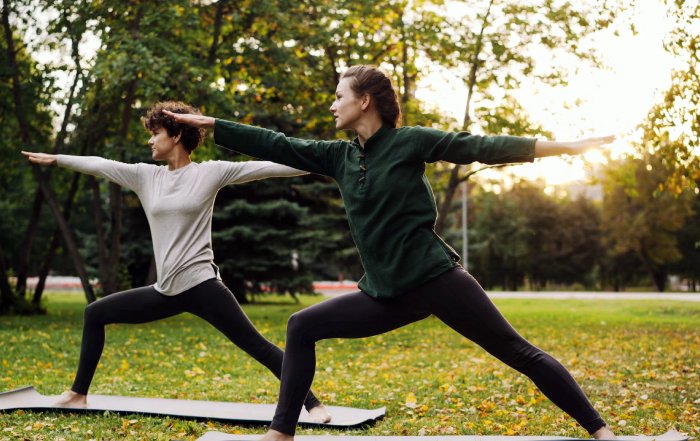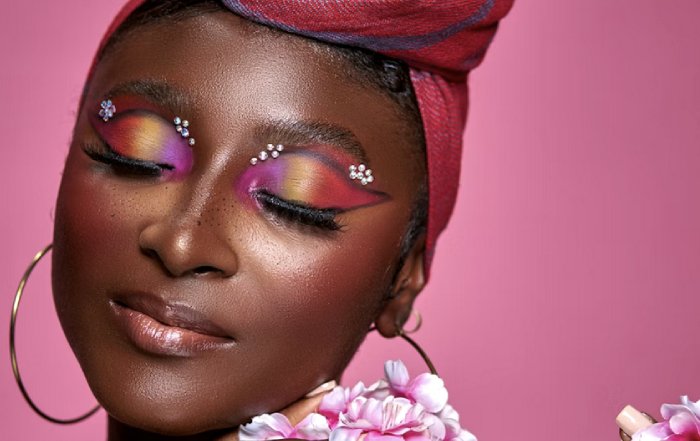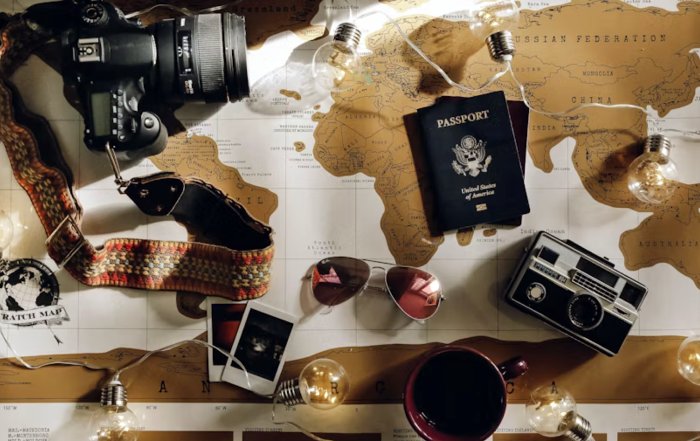How to Balance Skincare With an Active Lifestyle
Balancing high-performance skincare with an increasingly active, mobile lifestyle has become one of the defining wellness and business challenges of 2026, especially for professionals who transition in a single day from early-morning training sessions to hybrid offices, airport lounges, client dinners, and social events across global hubs from New York and London to Seoul, Singapore, Sydney, Berlin, and São Paulo. For the worldwide community that turns to BeautyTipa for guidance, many of whom are simultaneously advancing demanding careers, managing families, maintaining fitness routines, and navigating complex beauty standards, the central question is no longer whether skincare deserves attention, but how to integrate intelligent, evidence-based routines into fast-paced schedules without compromising results, productivity, or sustainability.
As dermatological science, environmental research, and cosmetic technology continue to evolve, and as the beauty and wellness industries become more data-driven and personalized, the intersection of skincare and active living has moved far beyond a simple "cleanse and moisturize" mindset. It is now a strategic system that must adapt to high-intensity interval training in Los Angeles, outdoor cycling in Amsterdam, hot yoga in Bangkok, winter sports in Switzerland, and urban commuting in cities with high pollution levels such as London, Paris, Beijing, and Mexico City. Within this context, BeautyTipa positions itself as a practical, trusted partner, connecting insights from its dedicated sections on beauty, wellness, skincare, and health and fitness to help readers design routines that respect both their skin biology and their lifestyles.
The Modern Active Lifestyle and Its Impact on Skin in 2026
By 2026, the active lifestyle has expanded beyond traditional notions of gym time or weekend sports into a continuous pattern of movement, digital exposure, environmental stress, and social visibility. Professionals in cities such as New York, Toronto, Frankfurt, Singapore, Tokyo, and Johannesburg often begin the day with a run or strength session, commute through traffic and pollution, spend hours under artificial lighting and air conditioning, engage in back-to-back video calls, and close the evening at networking events where appearance still contributes to perceived credibility and influence. Each of these phases exposes the skin to sweat, friction from clothing and equipment, ultraviolet radiation, particulate matter, blue light, fluctuating humidity, and frequent cleansing, all of which can erode barrier function and accelerate visible aging if not addressed with intention.
Dermatology societies such as the American Academy of Dermatology and the British Association of Dermatologists continue to highlight the cumulative effect of environmental aggressors and lifestyle-related oxidative stress on conditions like hyperpigmentation, sensitivity, and premature lines. Readers who want to understand how ambient pollution and UV exposure shape overall health can explore broader environmental and health perspectives from organizations like the World Health Organization or the National Institutes of Health, which increasingly connect climate, air quality, and UV index data to long-term wellness outcomes. For active individuals across North America, Europe, Asia, Africa, and South America, this means any serious skincare strategy must go beyond managing sweat and oil to address the invisible but powerful daily burden of modern living.
Skin Biology Under Movement, Heat, and Stress
To reconcile skincare with an active schedule, it is essential to understand how skin behaves under physical exertion, temperature shifts, and mechanical friction, and how sweat, sebum, and the cutaneous microbiome interact before, during, and after exercise. During training, increased blood flow delivers oxygen and nutrients to skin cells, which can support a healthy glow and more efficient cellular turnover, but when sweat mixes with surface oils, environmental pollutants, and occlusive makeup or heavy sunscreen, pores can become blocked and micro-inflammation can develop, especially on the forehead, jawline, back, chest, and along sports bra or helmet lines.
Research from institutions such as Harvard Medical School and Mayo Clinic has helped clarify the role of the skin barrier and microbiome in maintaining resilience under repeated stress. Readers can deepen their understanding of barrier function, inflammation, and over-cleansing by reviewing accessible resources from Harvard Health Publishing or the Mayo Clinic, which explain how hot showers, aggressive surfactants, and excessive exfoliation strip essential lipids and disrupt microbial balance, leading to dryness, redness, and sensitivity. For the BeautyTipa audience, many of whom incorporate potent actives such as retinoids, exfoliating acids, peptides, and vitamin C, this biological context is crucial, because combining intensive training schedules with aggressive topical regimens can easily tip the skin into chronic irritation or barrier damage if routines are not calibrated carefully.
Skincare as a Performance and Reputation Asset
Across global business centers from New York and San Francisco to London, Zurich, Singapore, and Dubai, skincare in 2026 is increasingly framed as part of a broader performance toolkit rather than a purely cosmetic indulgence. Executives, founders, consultants, and creative professionals who appear frequently on video calls, at conferences, and in media understand that healthy, well-maintained skin communicates discipline, attention to detail, and self-respect, while also reinforcing personal confidence in high-stakes environments. At the same time, elite athletes, personal trainers, and wellness entrepreneurs increasingly treat skincare as an element of recovery and long-term resilience, aligning it with sleep optimization, nutrition, and stress management.
This shift aligns closely with the editorial focus of BeautyTipa, particularly within its coverage of business and finance and jobs and employment, where professional image, personal branding, and well-being intersect. Analyses from consulting firms such as McKinsey & Company and Deloitte, available through resources like McKinsey's insights and Deloitte's research pages, show that employee wellness, including mental and physical health, remains a strategic priority for organizations worldwide, particularly in hybrid and remote work models. As expectations around digital presence and leadership visibility grow, clear, well-managed skin becomes an asset that supports both personal credibility and organizational culture.
Find Your Perfect Active Skincare Routine
Answer 5 questions to discover a personalized routine that fits your lifestyle
Preparing the Skin Before Training or Competition
Effective pre-workout skincare in 2026 is built on simplicity, comfort, and protection, rather than elaborate layering. The goal is to prepare the skin for heat, sweat, and friction without introducing unnecessary occlusion or irritants. For early-morning workouts, this typically means a quick, gentle cleanse to remove overnight oil and product residue, followed by light hydration and, if training outdoors, a broad-spectrum sunscreen that is sweat-resistant yet non-comedogenic. In regions with strong sun exposure such as Australia, South Africa, Spain, California, and parts of Brazil, consistent sunscreen use remains one of the most powerful tools for long-term skin health, a point reinforced by organizations like the Skin Cancer Foundation, whose educational materials at skincancer.org emphasize the importance of daily, broad-spectrum SPF.
For individuals who exercise indoors before heading into daylight later, it can be more strategic to keep pre-workout skincare minimal and focus on thorough cleansing and sun protection after training, reducing the likelihood of product-sweat interactions that cause stinging or clogged pores. Professionals who exercise between meetings or during lunch breaks face an additional challenge when makeup is part of their work presentation; removing foundation and heavy coverage before intense activity remains best practice to avoid occlusion and breakouts. Dermatology-focused resources from the American Academy of Dermatology and Cleveland Clinic, accessible via aad.org and Cleveland Clinic's health library, consistently recommend breathable, lightweight layers before workouts, especially for those prone to acne, rosacea, or sensitivity.
The Post-Workout Window: Repair, Reset, and Protection
The period immediately following exercise is a critical window for maintaining clear, resilient skin, because sweat, increased temperature, and friction have temporarily altered the skin's microenvironment and left it more vulnerable to irritation and congestion. Ideally, cleansing should take place within 30 to 60 minutes after finishing activity, using gentle, pH-appropriate formulas that remove sweat, salt, oil, and sunscreen without stripping the barrier. For individuals who train multiple times per day, swim regularly in chlorinated pools, or combine gym sessions with outdoor sports, this can mean two or three cleanses daily, which underscores the importance of avoiding harsh surfactants or abrasive scrubs that compound dryness and microdamage over time.
Post-workout routines should prioritize hydration and barrier repair, particularly for readers in climates with strong air conditioning, cold winds, or low humidity, such as Canada, the Nordic countries, Switzerland, and parts of the United States and China. Lightweight serums containing humectants like glycerin and hyaluronic acid, followed by barrier-supportive moisturizers with ceramides, cholesterol, and fatty acids, can help calm redness, reduce tightness, and restore comfort. Targeted actives such as niacinamide for redness and oil regulation, azelaic acid for post-inflammatory marks, or mild exfoliating acids used judiciously can be integrated into evening routines when the skin is no longer heated from exercise. Readers who want structured frameworks for adapting morning and evening routines around training schedules can explore BeautyTipa's dedicated pages on routines and guides and tips, where principles from dermatology are translated into practical, time-efficient steps.
Climate, Geography, and Sport-Specific Demands
Global readers of BeautyTipa cannot treat skincare for an active lifestyle as a universal template, because climate, geography, and specific sports dramatically change what the skin experiences and therefore what it needs. Outdoor runners in Los Angeles, Madrid, or Perth contend with high UV exposure and often dry air, requiring robust sun protection, antioxidant support, and diligent hydration. Cyclists in Amsterdam, Copenhagen, or Berlin face wind, humidity, and pollution, calling for wind-resistant yet breathable protection and thorough but gentle cleansing. Skiers and snowboarders in Switzerland, Austria, Canada, Japan, and the United States must protect their skin from cold, low humidity, and reflective UV from snow, conditions that accelerate moisture loss and can trigger or worsen rosacea, eczema, and chapping.
Organizations like the World Meteorological Organization and national weather services increasingly provide accessible UV index and air quality data that individuals can incorporate into daily decisions about sunscreen, antioxidant use, and cleansing frequency. Readers can, for example, consult resources from the Met Office UK or the U.S. Environmental Protection Agency to understand local UV and pollution levels and adapt their protective strategies accordingly. For the globally mobile audience of BeautyTipa, who may move from humid cities such as Singapore, Bangkok, or Kuala Lumpur to drier regions in the United States, South Africa, or the Middle East, adapting product textures and layering approaches becomes essential, and the platform's international coverage offers region-specific context on how climate and culture shape skincare practice.
Minimalist Versus Maximalist Routines for Busy, Active Lives
One of the most persistent challenges for active professionals and frequent travelers is designing routines that deliver results without collapsing under the weight of complexity. Social media and influencer culture often promote elaborate, multi-step rituals, but behavioral research and clinical experience suggest that consistent adherence to a streamlined, well-designed regimen typically produces better outcomes than sporadic use of many products. In 2026, many dermatologists and evidence-focused educators advocate for "smart minimalism," in which each product has a clear function, and routines can be scaled up or down depending on time, skin condition, and activity level.
For the BeautyTipa readership, a realistic framework might involve a three-step core routine on high-activity or high-travel days-cleanse, moisturize, protect-paired with a more targeted evening routine on calmer days, where actives for hyperpigmentation, fine lines, acne, or texture can be used thoughtfully. Authoritative health platforms such as MedlinePlus and WebMD continue to reinforce that gentle cleansing, adequate moisturization, and consistent sun protection form the backbone of skin health across age groups and skin types. Within this foundation, the skincare and beauty sections of BeautyTipa help readers determine which advanced steps-such as chemical exfoliants, retinoids, or professional treatments-fit their goals, risk tolerance, and training schedules, minimizing the chance of over-exfoliation or sensitization.
Technology, Data, and the Evolving Active Skincare Ecosystem
The convergence of technology, wellness, and beauty has accelerated further in 2026, and active individuals are at the center of this transformation. Wearables and smart devices now track not only heart rate, steps, and sleep, but also elements like skin temperature, environmental exposure, and in some cases hydration proxies, enabling more integrated views of how training, travel, and stress shape skin behavior. At the same time, beauty-tech platforms and research-led brands are deploying artificial intelligence and machine learning to analyze user-uploaded photos, lifestyle questionnaires, and environmental data to generate personalized skincare recommendations that can adapt as routines and locations change.
Readers interested in how these tools are reshaping routines can explore the technology beauty section of BeautyTipa, which follows innovation in markets such as South Korea, Japan, the United States, the United Kingdom, and the European Union, and tracks how groups like L'Oréal, Shiseido, and Estée Lauder Companies are investing in virtual diagnostics, augmented reality try-on, and algorithm-driven product matching. Market intelligence providers such as Euromonitor International and Statista, accessible via euromonitor.com and statista.com, provide quantitative context on the growth of sports-adjacent skincare, dermocosmetics, and sun care categories. For the BeautyTipa community, which often already uses fitness apps, nutrition trackers, and sleep monitors, integrating skincare into the same digital ecosystem offers a practical way to align routines with real-world behavior rather than idealized schedules.
Choosing Products and Brands That Support Movement and Resilience
In a marketplace where new launches are constant and science-inspired language is widely used in marketing, selecting products that genuinely support an active lifestyle requires both ingredient literacy and an understanding of brand credibility. Active individuals benefit from formulations that are non-comedogenic, sweat-compatible, and designed to maintain barrier integrity under frequent cleansing and environmental stress. Lightweight gels and emulsions, fragrance-free or low-fragrance options, and products tested on sensitive or acne-prone skin often perform better for those who train regularly, especially in hot or humid climates common in parts of Asia, South America, and the southern United States.
The brands and products section of BeautyTipa is curated to help readers navigate this complexity, focusing on transparency, efficacy, and long-term skin health when evaluating offerings from established dermocosmetic leaders such as La Roche-Posay, CeraVe, and Vichy, as well as newer labels specializing in sports skincare and barrier repair. Regulatory and consumer protection resources such as the U.S. Food and Drug Administration and the European Commission's cosmetics portal at ec.europa.eu can help readers understand how ingredients and claims are regulated, while databases like the Environmental Working Group's Skin Deep offer additional perspectives on ingredient safety and environmental impact. For business-minded readers, these factors intersect with brand positioning, supply chain ethics, and sustainability commitments, all of which influence purchasing decisions in markets like Germany, France, the Netherlands, the Nordic countries, and increasingly in Asia-Pacific and Latin America.
Nutrition, Recovery, and Holistic Skin Resilience
No skincare routine can fully compensate for internal imbalances, and for active individuals in particular, the quality of nutrition, sleep, and recovery profoundly shapes how the skin looks and feels. Evidence from organizations such as the World Health Organization and institutions like the Harvard T.H. Chan School of Public Health continues to support the role of diets rich in vegetables, fruits, whole grains, healthy fats, and adequate protein in maintaining collagen synthesis, barrier function, and antioxidant capacity. For those engaged in regular endurance or high-intensity training, adequate hydration and electrolyte balance are essential, as dehydration not only affects performance but also contributes to dullness, fine lines, and increased sensitivity.
Within BeautyTipa, the food and nutrition and wellness sections provide practical frameworks for aligning dietary choices with skin and performance goals, exploring topics such as glycemic index and acne, the role of omega-3 fatty acids, and the impact of alcohol and ultra-processed foods on inflammation and skin clarity. In parallel, the health and fitness coverage emphasizes the importance of sleep hygiene, periodized training, and stress management, which are all closely linked to conditions such as eczema, psoriasis, and stress-triggered breakouts. Public health resources from the Centers for Disease Control and Prevention and NHS UK at nhs.uk reinforce the interconnectedness of physical activity, mental health, and chronic disease risk, underlining that skincare should be considered one component of a broader lifestyle architecture that supports long-term resilience.
Cultural Trends, Aesthetic Preferences, and Global Market Dynamics
How active individuals approach skincare is also deeply shaped by cultural norms, aesthetic ideals, and market structures that vary across regions such as North America, Europe, and Asia. In South Korea and Japan, where prevention-focused routines and multi-step regimens are culturally ingrained, there is strong emphasis on gentle cleansing, layering hydration, and rigorous sun protection-principles that align naturally with the needs of active lifestyles and have influenced global beauty standards through K-beauty and J-beauty. In markets like the United States, Canada, the United Kingdom, and Australia, routines have historically been more minimalistic and results-driven, though younger consumers increasingly embrace ingredient literacy and more sophisticated regimens inspired by global content.
The trends vertical at BeautyTipa tracks how these cultural patterns intersect with the rise of athleisure beauty, sweat-resistant makeup, and hybrid products that bridge skincare and performance. Industry analyses from Allied Market Research and Grand View Research, available at alliedmarketresearch.com and grandviewresearch.com, document the growth trajectories of active beauty, sun care, and dermocosmetic segments, while business-focused publications such as Vogue Business and Business of Fashion, accessible via voguebusiness.com and businessoffashion.com, explore how fashion, sports, and beauty collaborations are shaping consumer expectations. For BeautyTipa's international audience-from Germany, France, Italy, Spain, and the Netherlands to China, South Korea, Japan, Thailand, South Africa, Brazil, Malaysia, and New Zealand-understanding these dynamics helps in making informed choices that respect both personal values and local norms.
Integrating Skincare Seamlessly Into an Active Day
For the global community that relies on BeautyTipa, the most sustainable way to balance skincare with an active lifestyle in 2026 is to treat it as a non-negotiable but flexible component of daily self-care, similar to brushing teeth or hydrating, rather than as a rigid or aspirational ritual. This means establishing a robust core routine that can be compressed to a few essential steps on travel days, competition days, or long office days, and expanded when time allows for masks, treatments, or professional services. It also means aligning product choices and timing with real schedules: planning post-workout cleansing and hydration, keeping travel-sized essentials in gym and work bags, and adjusting textures and actives when moving between climates.
By approaching skincare through the lens of experience, expertise, and trustworthiness, and by drawing on high-quality information from medical, scientific, and industry sources, active individuals can protect their skin from cumulative damage while maintaining the polished, confident appearance that supports both personal and professional goals. As BeautyTipa continues to connect beauty, wellness, business, and technology across its integrated platform-from makeup and fashion to events and business and finance-the site remains committed to translating complex trends and scientific insights into practical guidance that fits real lives in the United States, the United Kingdom, Germany, Canada, Australia, France, Italy, Spain, the Netherlands, Switzerland, China, Sweden, Norway, Singapore, Denmark, South Korea, Japan, Thailand, Finland, South Africa, Brazil, Malaysia, New Zealand, and beyond.
In an era where performance, visibility, and pace are constantly intensifying, the ability to maintain healthy, resilient, and well-cared-for skin is no longer a superficial concern; it is a strategic advantage. When approached with knowledge, intention, and the right support, skincare can move in step with an active, ambitious life rather than competing with it, enabling individuals to show up consistently as their most confident, energized, and authentic selves-on the track, in the boardroom, and everywhere in between.








